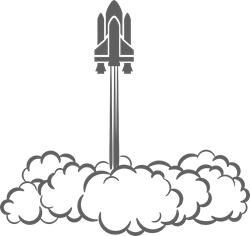
The Zweig Breadth Thrust Triggers, but the Indicator is Missing Something
Today’s report features the Zweig Breadth Thrust, which was developed by the late, and great, Marty Zweig. Zweig appeared regularly on Wall Street Week, contributed to Barrons, published The Zweig Forecast and wrote Winning on Wall Street in 1986. Among other things, his timeless book shows us how to “spot market trends early”. The Zweig Breadth Thrust does not feature in the book, but I wholeheartedly recommend this book for its enduring wisdom and market insights.
A Zweig breadth thrust triggered for NYSE stocks in early November. I say NYSE stocks because Zweig used NYSE breadth for his thrust indicator. The indicator is the 10-day EMA of NYSE Advances divided by NYSE Advances plus NYSE Declines. The formula comes from Greg Morris’ book, the Encyclopedia of Breadth Indicators.
The chart below shows the Zweig Breadth Thrust (!BINYBT) in the top window and the NY Composite in the lower window. The green shading shows the indicator surging from below .40 to above .615 within a 10 day window (ending November 3rd). The blue shadings show two signals that just missed the 10 day cutoff. The May surge took 12 days and the March surge took 11 days.
My research shows the NYSE Zweig Breadth Thrust triggering six times since early 2009. Despite infrequent signals, the rationale behind the indicator is solid. The indicator is designed to identify a deep dip with the move below .40. This is the setup. The signal triggers with an exceptionally sharp upside thrust after this dip (above .615). And, it must all happen within 10 days. This means it identifies an abrupt and sharp shift in the markets. These kinds of moves often occur at “V” bottoms, such as March 2009 and December 2018.
Something, however, is missing. And those somethings are Nasdaq stocks. I suspect Zweig used NYSE breadth because he developed it when the big board (NYSE) dominated trading. Things have changed and the Nasdaq is the place to be right now. A modern breadth indicator should include Nasdaq and NYSE stocks, as well as large-caps, mid-caps and small-caps. I would suggest S&P 1500 stocks for such an indicator.
TrendInvestorPro took the Zweig Breadth Thrust (ZBT) to the next level this week. First, we coded this indicator using S&P 1500 stocks (ZBT1500). Second, we quantified signals with a backtest. ZBT1500 signals are much more frequent and a signal also triggered on November 3rd. Entry is only half of the equation so I also added an exit condition based on the Average True Range (ATR). Click here to access the full report at TrendInvestorPro.
////////////////////////////
